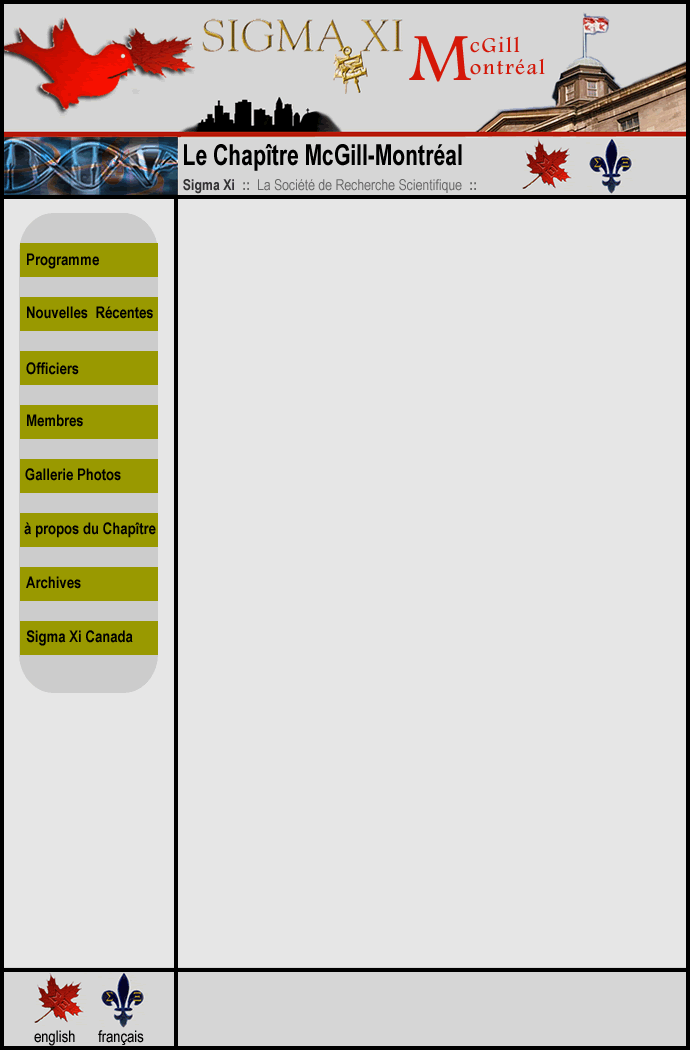mise à jour : 1 novembre 2006
NOVEMBRE 2006
Félicitations aux 14 gagnants de la compétion de recherche de premier cycle 2006. cliquez ici
Lecture du mois
Lundi, le 27 novembre 2006
Université McGill, Otto Maass Chimie
salle 10
Dr. Ronald Stewart
Our Winter Storms:
The Science Of Their Precipitation
Lecture publique: 18h00
______________________________
Réunion du conseil: 16h30
pièce Ruttan
______________________________
Réunion des membres: 17h30
pièce Ruttan
OCTOBRE 2006
Notre Chapître McGill-Montréal a reçu un
Certificat de Reconnaissance de Sigma Xi pour l'année fiscale 2006
Lundi, le 23 Octobre 2006
Université McGill, Otto Maass Chimie
salle 217
Dr. Hans Larsson
Hunting Dinosaurs and other fossils
in the Canadian High Arctic:
what ancient climate
change may tell us
Lecture publique: 18h00
______________________________
Réunion du conseil: 16h30
pièce Ruttan
______________________________
Réunion des membres: 17h30
pièce Ruttan
SEPTEMBRE 2006
Vous êtes cordialement invités:
Deuxième lecture d'Entin
Lundi, le 25 septembre 2006
Otto Maass Chimie
pièce Ruttan
Dr. David colman
Evolution, Structure and
Assembly of the Myelin Sheath
Lecture publique: 18h00
______________________________
Réunion du conseil: 16h30
pièce: à déterminer
Réunion des membres: 17h30
pièce Ruttan
ÉTÉ 2006
Le chapître McGill-Montréal a un
nouveau co-président:
Dr. Juan Vera
Professeur Emeritus, Génie Chimique
Nous avons aussi deux nouveau secrétaires :
Mr. Thomas D. Lazzara
Ms. An Thien Ngo
Photos et informations concernant notre troisième remise de prix Sigma Xi "Excellence en Recherche de Premier Cycle"
sont disponibes :
Cliquez ici.
Vous pouvez également visionnez les photos de notre voyage au Musé McCord au mois d'avril 2006 : Cliquez ici.

